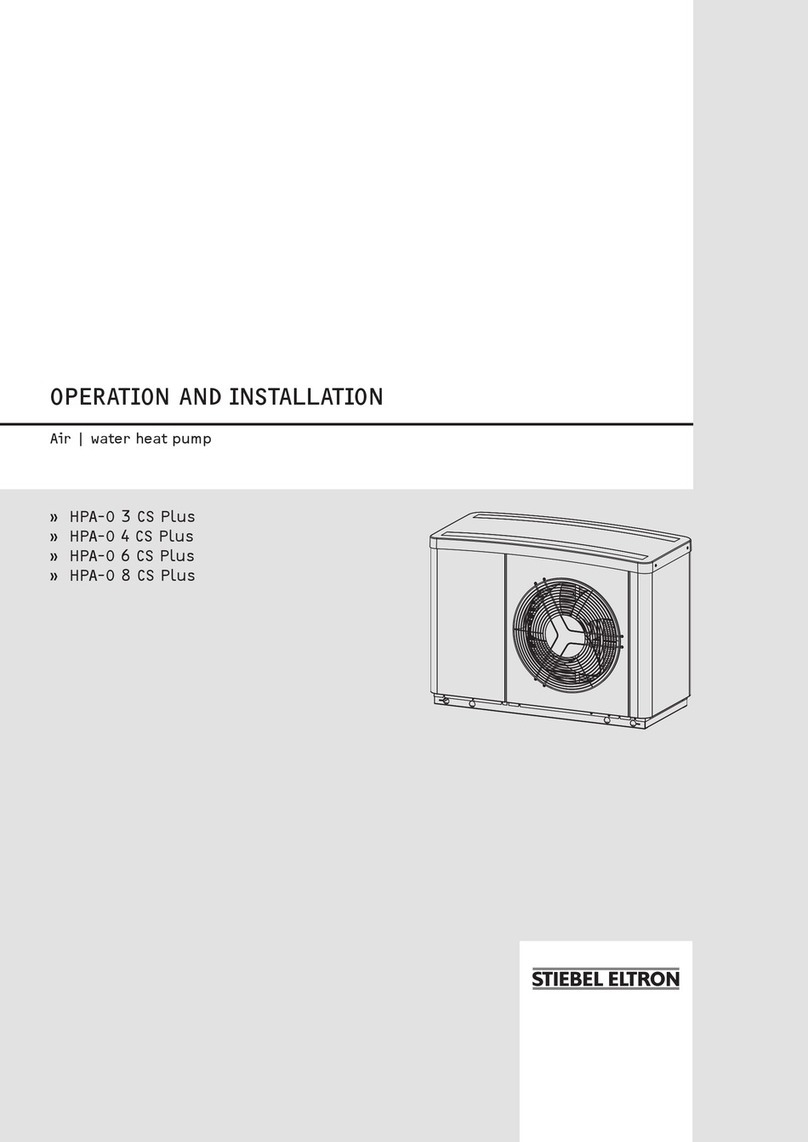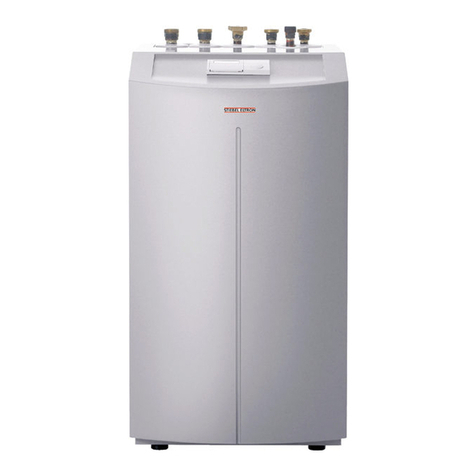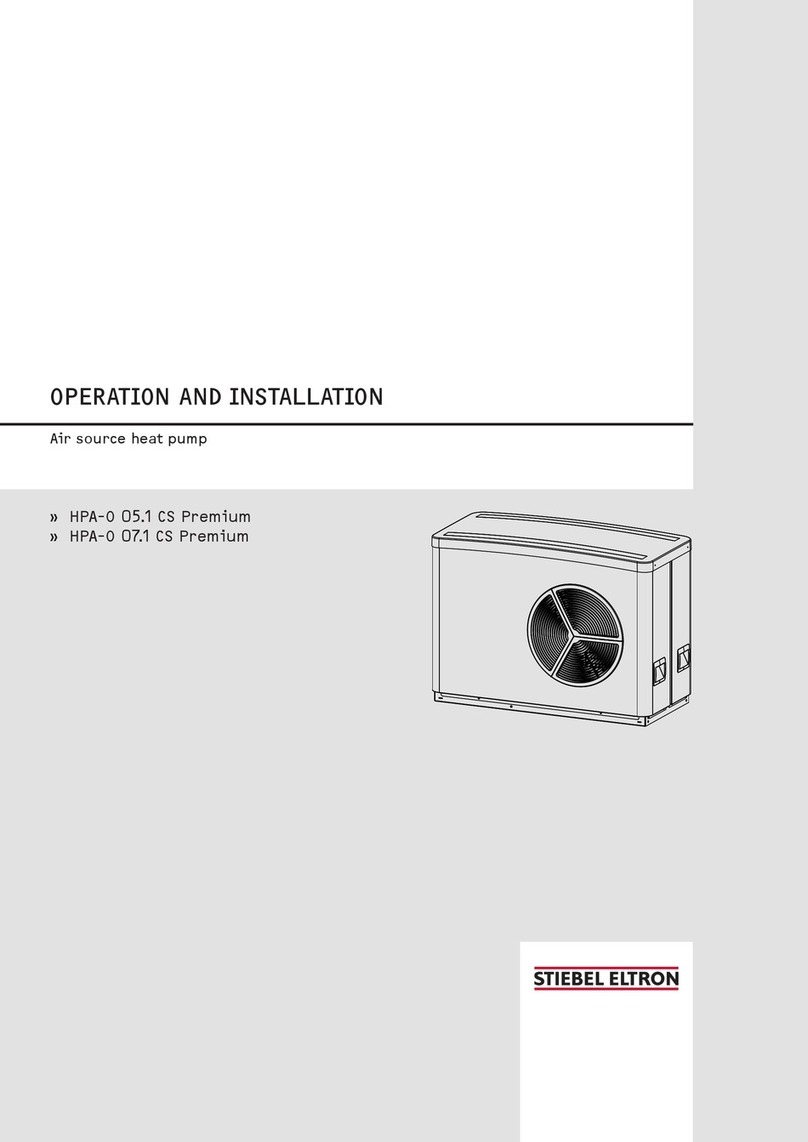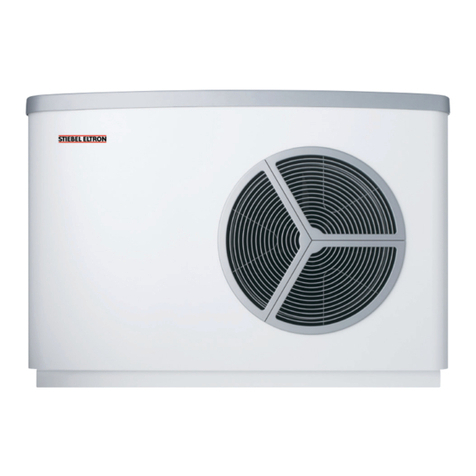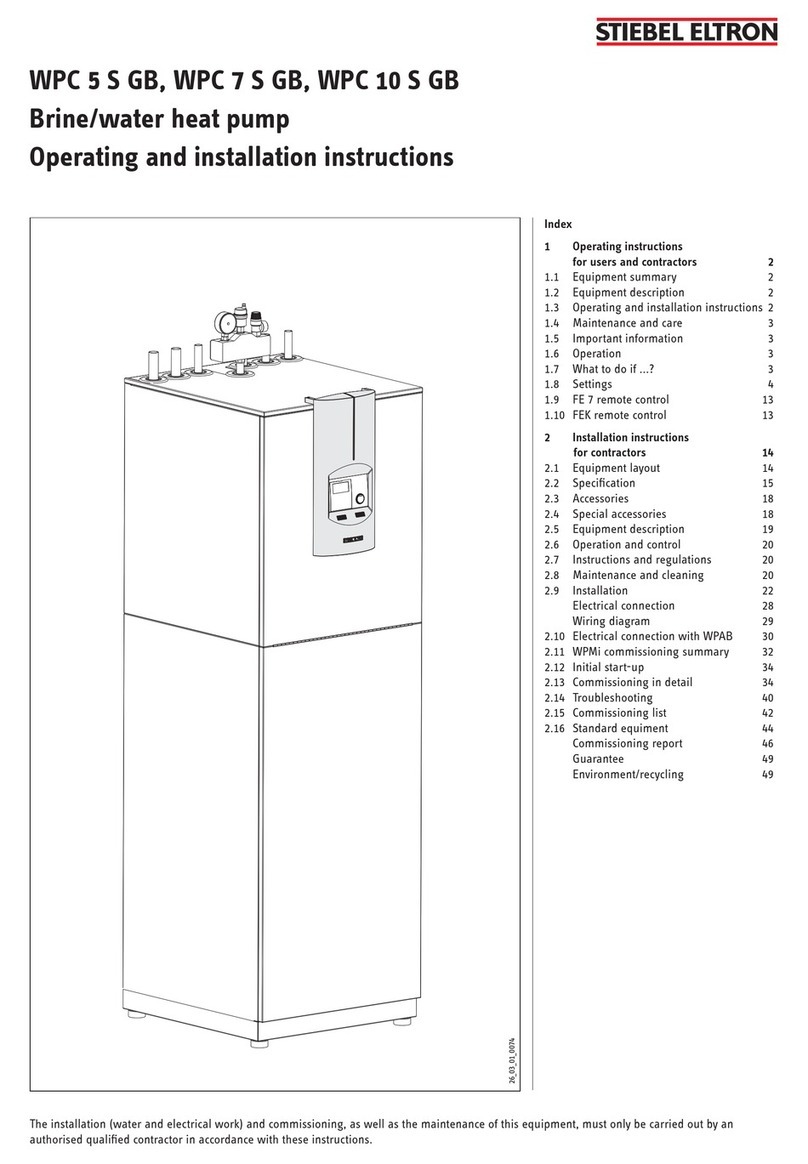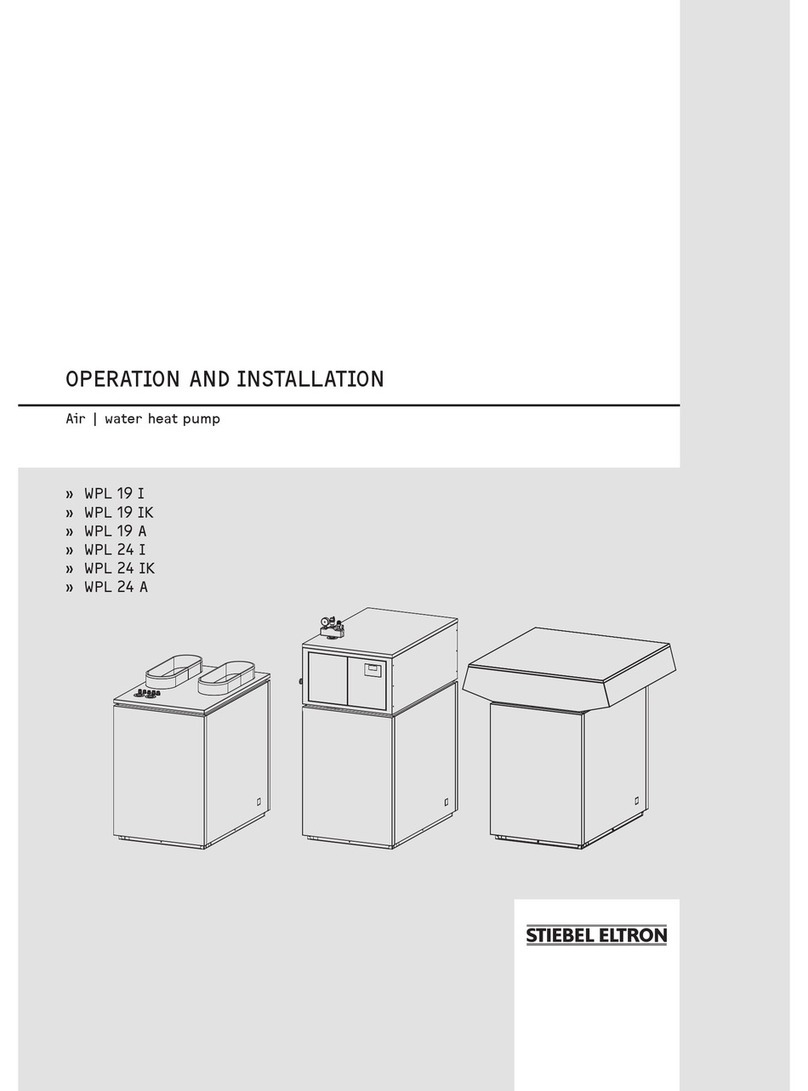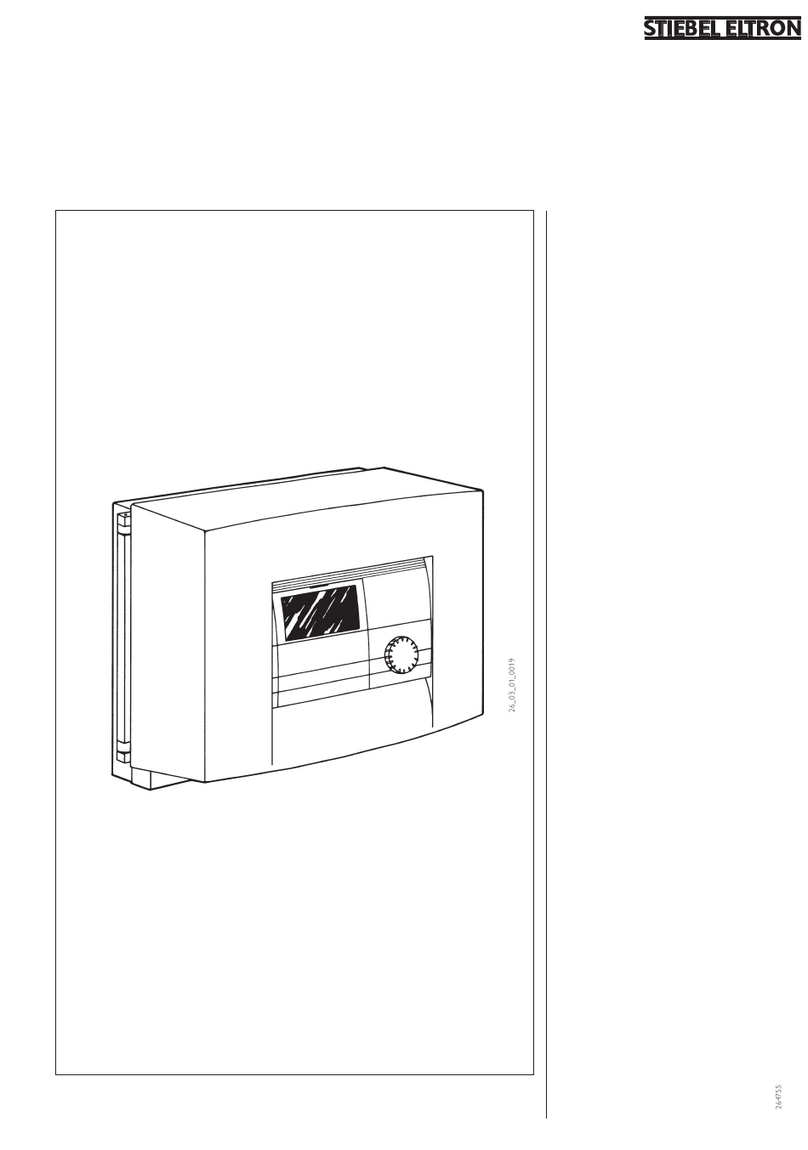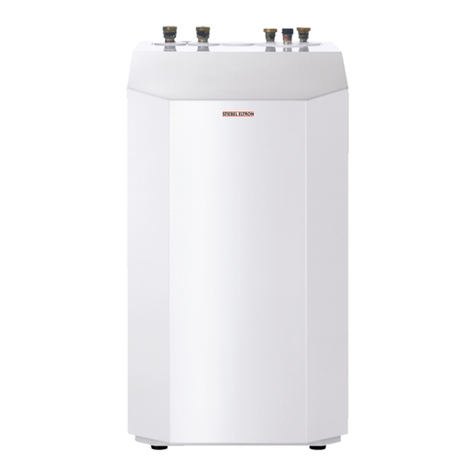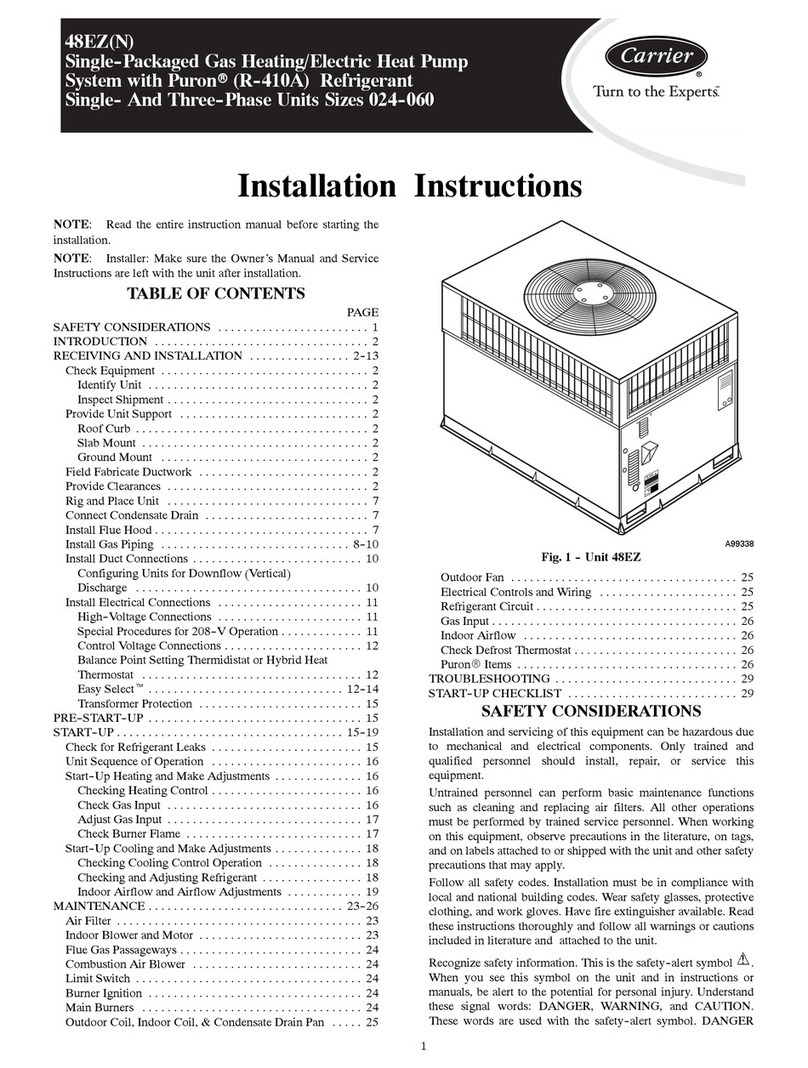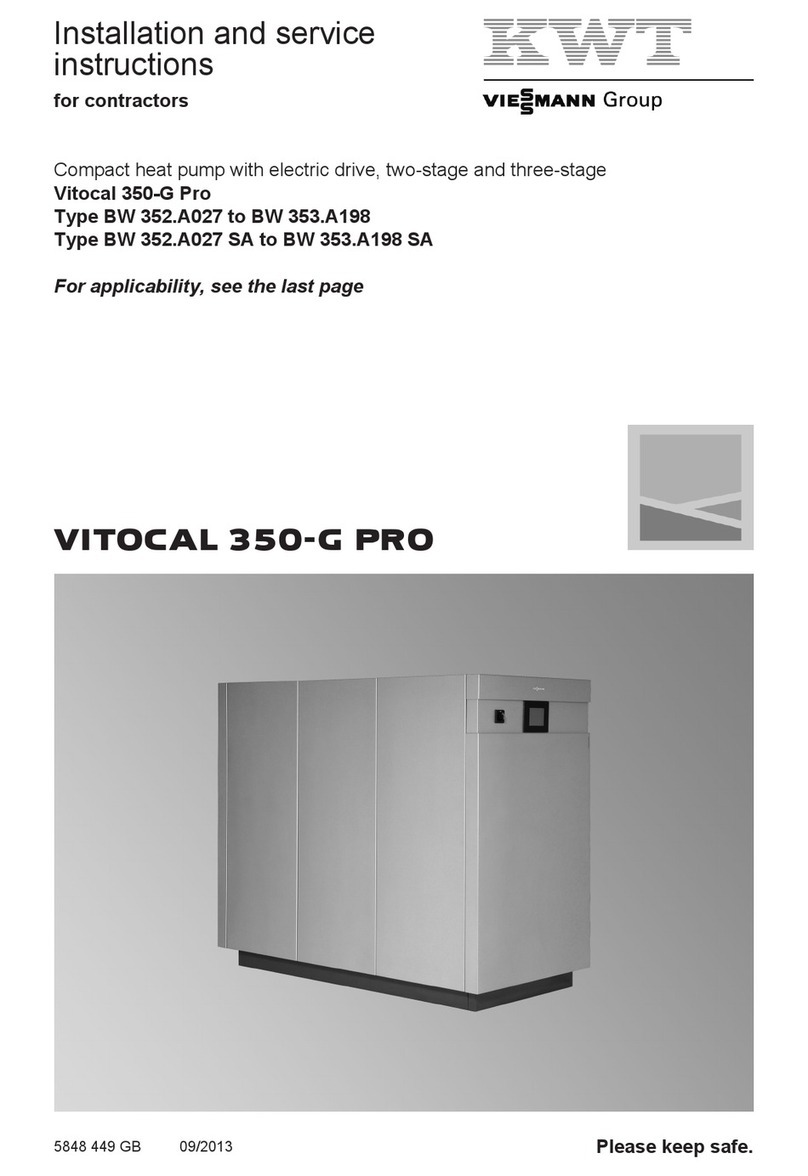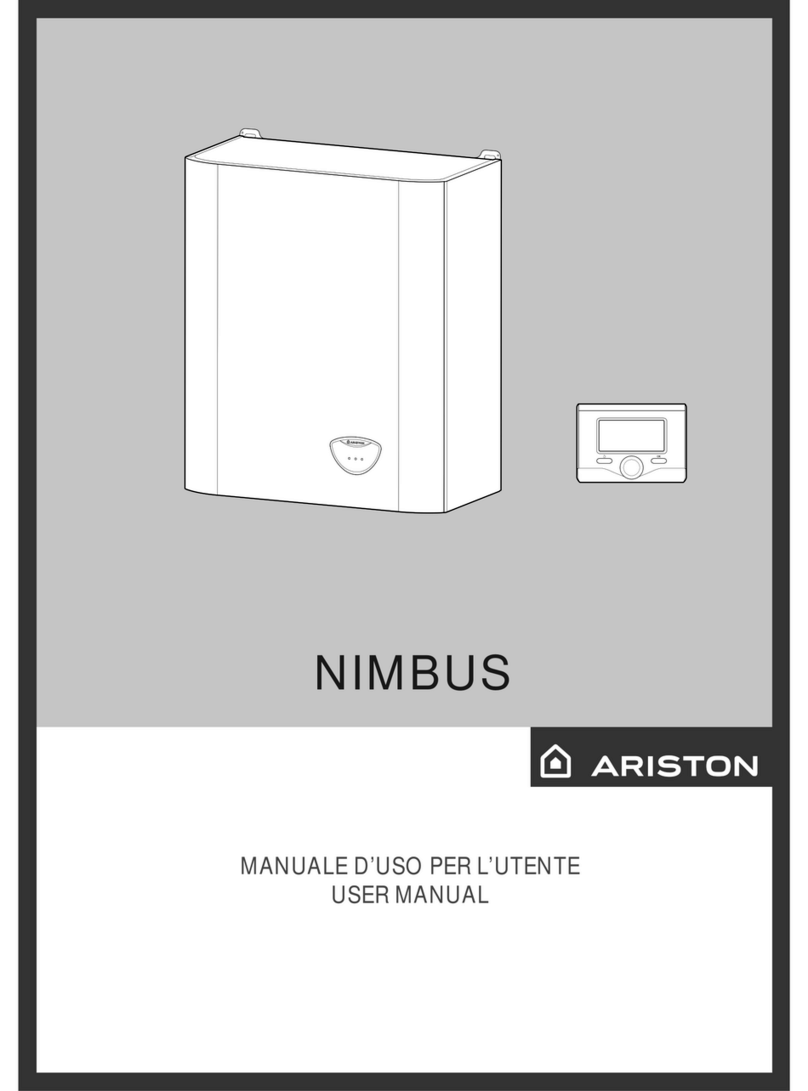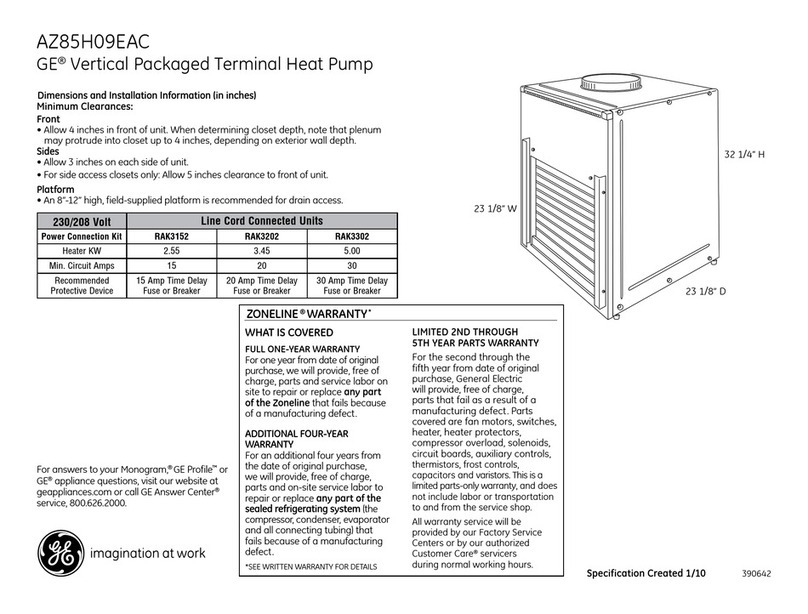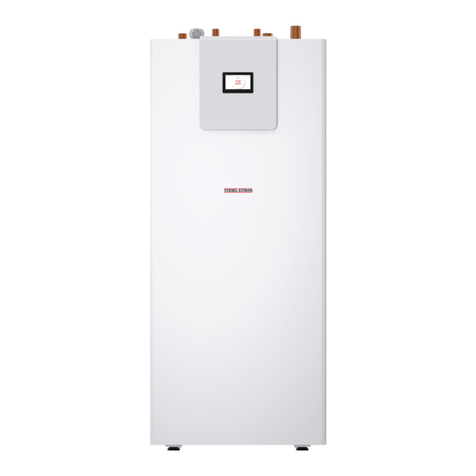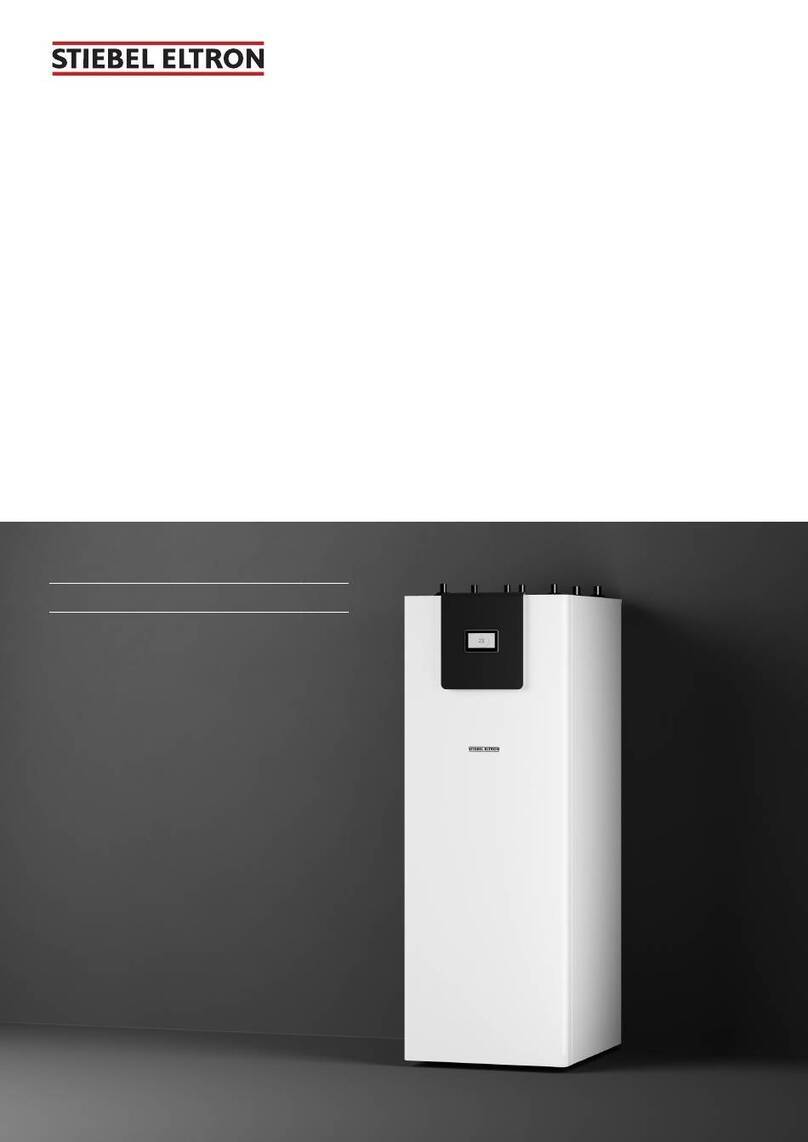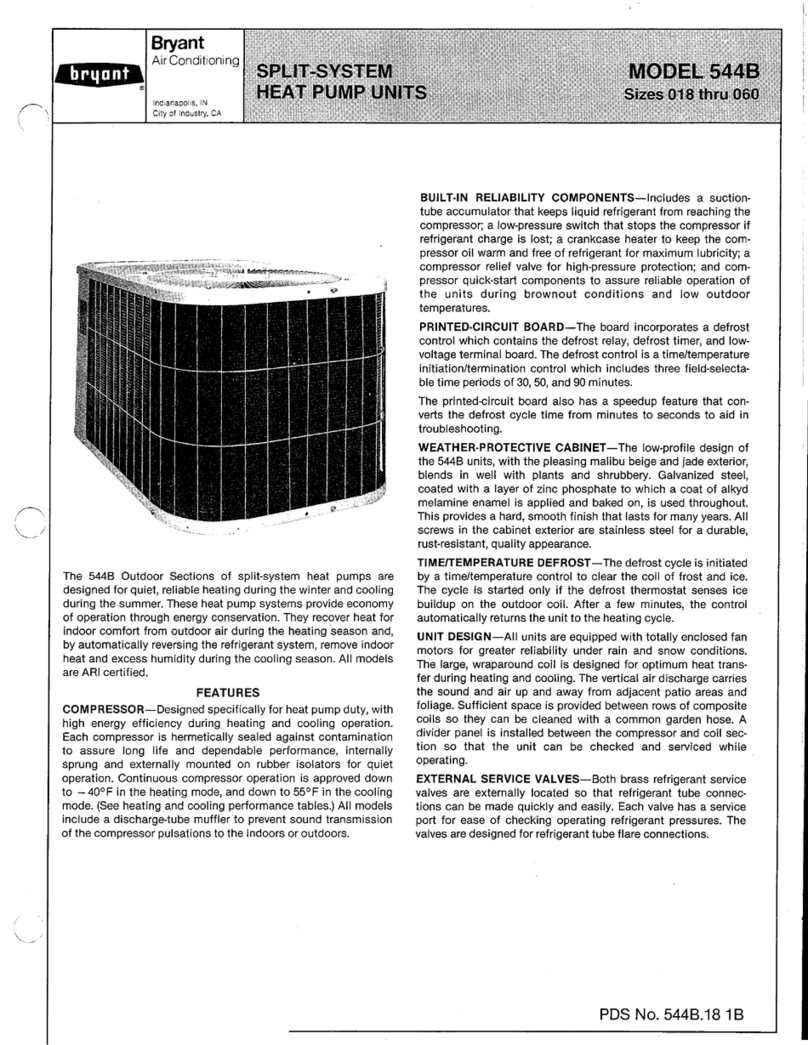
OPERATION
Appliance description
6| SHP-A 220-300 Plus www.stiebel-eltron.com
3. Appliance description
The fully wired appliance enables DHW to be supplied efficiently
to several draw-off points using renewable energy. The appliance
extracts heat from the intake air. This heat is used to heat up the
water in the DHW cylinder with added electric power. The amount
of electric energy and time required to heat up the DHW depend
on the temperature of the air drawn in. When the air inlet tem-
perature drops, the appliance output is reduced and the heat-up
time is extended.
The appliance is designed for indoor installation. The appliance
operates in recirculation air mode and does not require outdoor
air.
Heat extraction can result in a drop in ambient temperature in
the installation room of between 1°Cand3°C. The appliance
also extracts moisture from the air, which turns into condensate.
The condensate is removed from the appliance via the condensate
drain.
The appliance has an electronic control unit with LC display. You
can select the available amount of mixed water at a temperature
of 40 °C, for example. The electronic control unit makes energy
saving adjustments easier. Subject to the power supply and user
draw-off patterns, the water is heated automatically to the se-
lected set temperature.
When the air inlet temperature drops, the appliance output is
reduced and the heat-up time is extended.
External signal transmitters can be integrated via the built-in con-
tact input, e.g. a photovoltaic system to make use of solar power
generated on site.
When a hot water draw-off point is opened, the hot DHW is pushed
out of the appliance by the inflow of cold water.
The heat pump drive unit is located in the upper section of the
appliance. The DHW cylinder is located in the lower section of the
appliance. To protect against corrosion, the DHW cylinder is coated
internally with special enamel and is additionally equipped with
an impressed current anode.
!
Material losses
If you disconnect the appliance from the power supply, it
is no longer protected against frost or corrosion.
Never interrupt the power supply to the appliance.
3.1 Heat pump operating principle
A closed circuit within the appliance contains refrigerant (see
"Specification/Data table"). This refrigerant evaporates at low
temperatures.
In the evaporator, which extracts heat from the air drawn in, the
refrigerant changes from a liquid into a gaseous state. A com-
pressor draws in the gaseous refrigerant and compresses it. This
increase in pressure raises the refrigerant temperature. That re-
quires electrical energy. The energy (motor heat) is not lost, but
reaches the downstream condenser together with the compressed
refrigerant. There, the refrigerant indirectly transfers heat to the
DHW cylinder. An expansion valve then reduces the still prevalent
pressure and the cycle starts again.
Note
Following an interruption of the power supply, the
compressor operation remains blocked for at least one
minute. The PCB delays electronic starting by a minute,
during which the appliance goes through its initialising
process.
If the compressor subsequently fails to start, it may be
locked out by additional safety devices (motor overload
relay or high pressure switch). This block should lift after
1 to 10 minutes.
After the power supply has been re-established, the ap-
pliance continues to operate with the parameters that
were selected before the power supply was interrupted.
3.2 DHW heating
2
D0000050335
1 Cylinder top sensor
2 Integral sensor
The appliance is equipped with two temperature sensors.
- The cylinder top sensor captures the water temperature in
the upper section of the cylinder.
- The integral sensor is a temperature sensor affixed over the
entire cylinder height. The integral sensor determines the
average cylinder temperature.
The appliance display indicates the temperature in the upper sec-
tion of the cylinder, which is captured by the cylinder top sensor.
The appliance control unit uses the average cylinder temperature
captured by the integral sensor.
DHW heating is started when the average cylinder temperature
has fallen and the cylinder holds only 40% of the thermal ener-
gy it held when it was heated fully to the set temperature. The
temperature captured by the sensor at the cylinder top may still
correspond to the set temperature.
For information on the heat-up time, see chapter "Specification".
The calculation of the available amount of mixed water is based
on the average cylinder temperature. The amount of mixed water
is only calculated if the water temperature in the upper section of
the cylinder is higher than 40 °C.
DHW is normally heated by the heat pump of the appliance within
the application limits (see chapter "Specification/ Data table").
Electric emergency/booster heater
In the event of an appliance fault, the electric emergency/booster
heater can be activated in emergency heating mode, provided
a flashing fault key is displayed. See chapter “Operation/’Rapid
heat-up’ key/Emergency heating mode”.
In the event of a higher hot water demand on a single occasion,
use the rapid heat-up key to activate the emergency/booster heat-
er manually for one-off heat-up in addition to the heat pump. See
chapter “Operation/’Rapid heat-up’ key/Rapid/comfort heating”.




